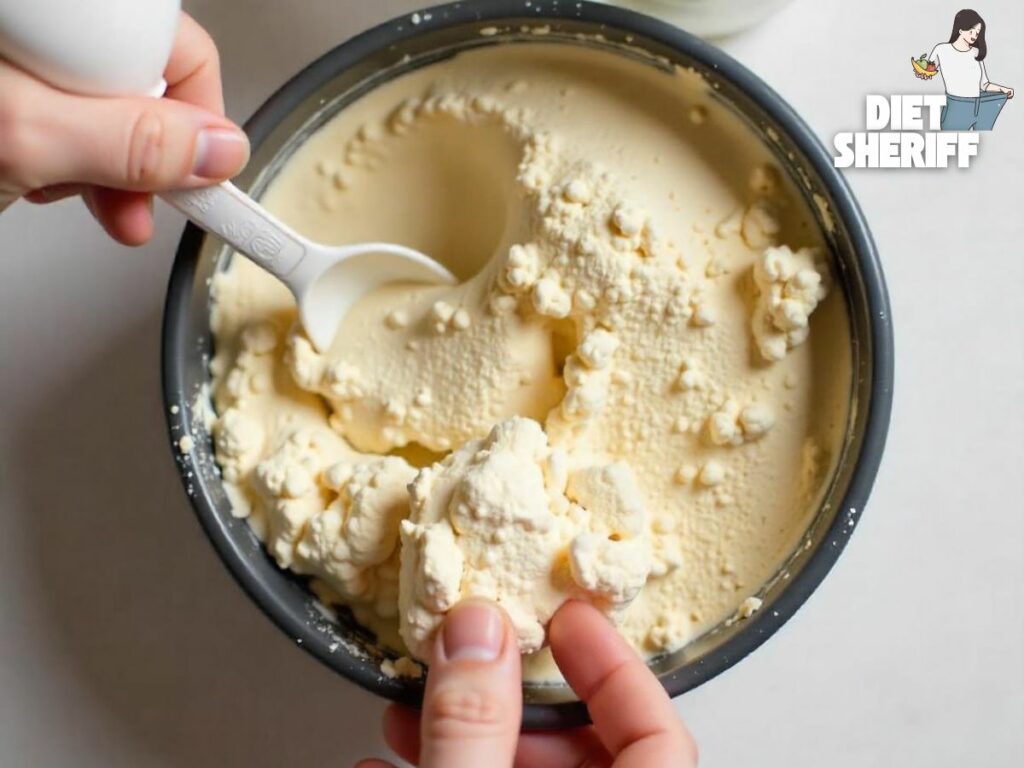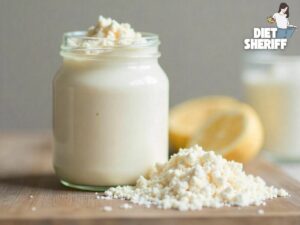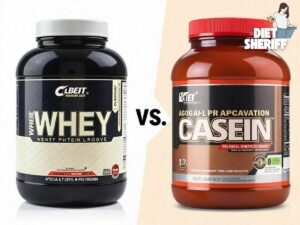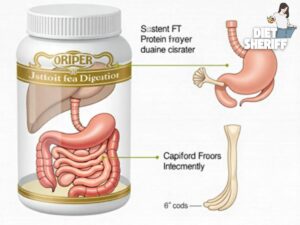Protein particles that clump up when combined with liquids are a frequent source of frustration for users.
These unappealing lumps have the potential to compromise the nutritional value of your smoothie in addition to altering its flavor and texture. Thus, “How to Mix Protein Powders without Clumping?” is the most often asked question.
A smooth and enjoyable experience requires knowing how to combine protein powders without clumping.
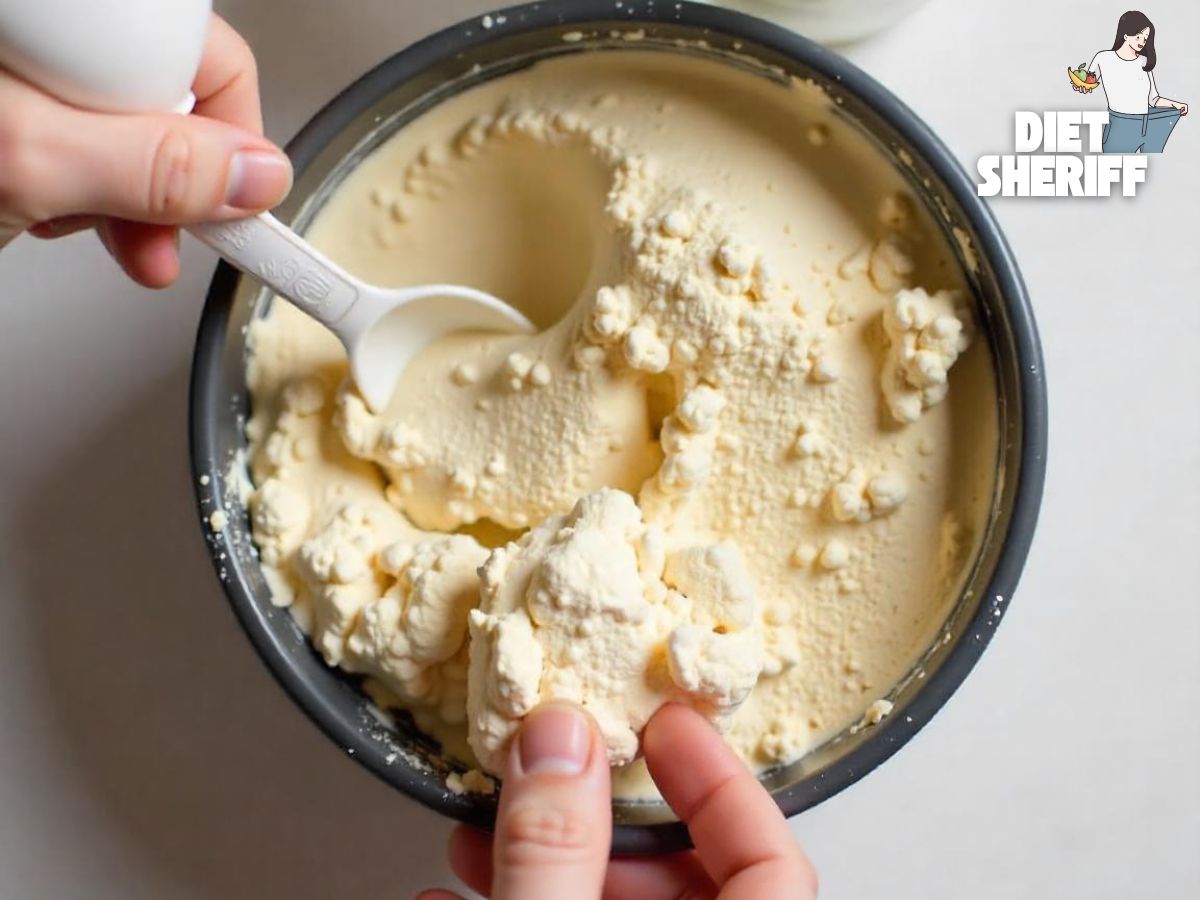
Key Takeaways
Expert Guide
How to Mix Protein Powder Without Clumping: Easy Tips and Tricks
Protein powder might be difficult to mix without clumping, but with the correct methods, you can have a smooth consistency.
Related Article: What Happens If You Drink Expired Protein Powder?
Here are a few simple pointers to help you properly combine protein powder:
- Use a Blender
High-Powered Blender: For combining protein powder, a powerful blender is one of the finest equipment. By generating a vortex, it completely mixes the powder with the liquid.
Just mix in the protein powder and your preferred beverage until smooth.
Smoothie Mixing: When preparing a smoothie, use additional components such as fruits and vegetables besides to the protein powder diet sheriff.
In addition to aiding in the powder’s dissolution, this improves nutrients and taste.
https://gigasecurehome.com/home-assistant-yellow-vs-blue
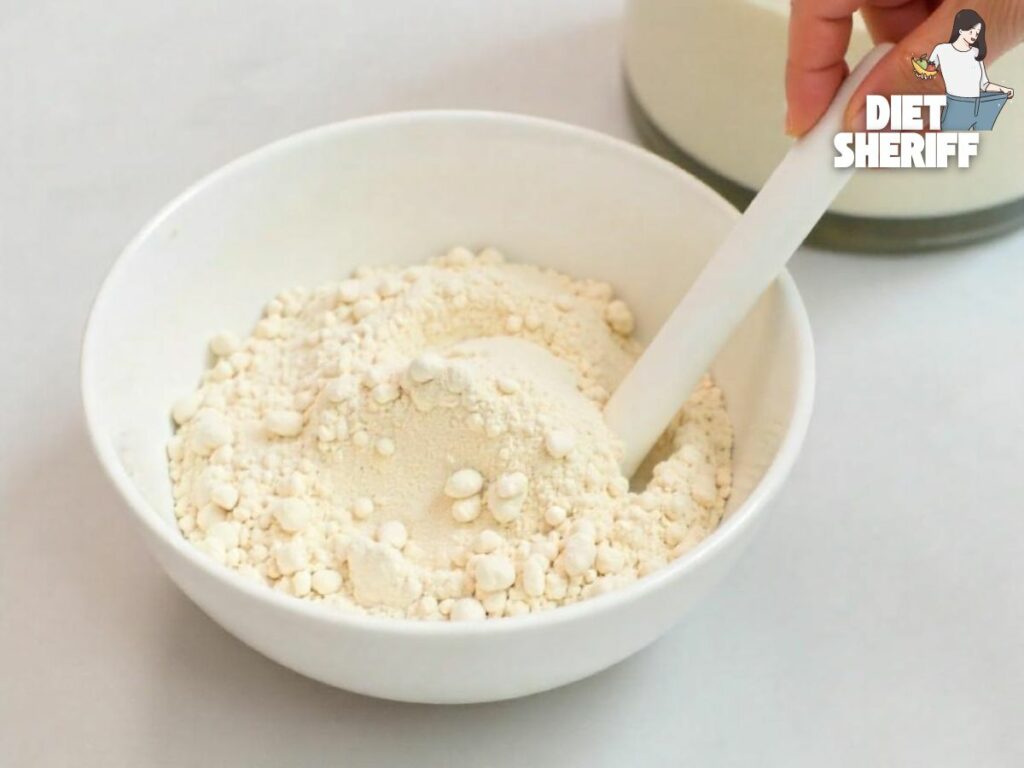
- Shaker Bottle
Ball Whisk: Many shaker bottles include a mixing grid or a metal ball whisk that is included.
These elements aid in dispersing clumps when shaking.
Related Article: Why Does Protein Powder Make You Fart? Understanding the Gassy Side Effects
Liquid First: Fill the shaker container with your liquid first. Next, incorporate the protein powder. The powder may distribute more easily and clumping is reduced in this sequence.
Seal and Shake: Shut the lid firmly and shake it vigorously for 20 to 30 seconds. Make sure there are no clumps and shake again if necessary.
https://gigasecurehome.com/openhab-vs-home-assistant
- Mix with Liquid First
Small Amounts of Liquid: To begin, mix your protein powder with a tiny bit of liquid. A thick paste can be made by rapidly whisking or stirring.
Before adding the remaining liquid, the powder is dissolved with the aid of this first combination.
Room Temperature Liquid: Compared to cold liquids, room temperature or slightly warm liquids can aid in the protein powder’s dissolution.
The powder’s solubility is increased by heat.
- Gradual Addition
Sift the Powder: Before combining, think about sifting your protein powder if it’s really clumpy.
This sifting guarantees a finer texture and aids in breaking up bigger particles.
Add in Portions: Sprinkle the protein powder into your beverage gradually while stirring, rather than putting it all at once.
This approach lessens the possibility of clumping and enables improved integration.
- Choose the Right Liquid
Dairy or Dairy Alternatives: Your protein shake’s consistency and flavor can be enhanced by using milk or milk substitutes, since the lipids in these beverages aid in emulsifying the powder.
Cold vs. Warm Liquids: While some protein powders dissolve more readily in warm beverages, some combine better in colder ones.
Determine the ideal temperature for your particular protein powder by experimenting.
https://gigasecurehome.com/smartthings-vs-home-assistant
- Whisking
Hand Whisk: When mixing, a whisk may work better than a spoon. A whisk’s constant action breaks up clumps and produces smooth slurry.
Fork or Spoon: If you don’t have a whisk, you may use a spoon or fork.
Be ready to mix vigorously, though, since it can take extra work to thoroughly integrate the protein powder.
- Pre-Mix Powder
Combine with Other Dry Ingredients: Before adding any wet ingredients, combine the protein powder with other dry ingredients if you’re baking or creating protein bars.
This keeps clumps from forming and helps disperse the powder evenly.
- Use a Hand Mixer
Handheld Mixer: Protein powder and liquid may be combined effectively if you have a portable electric mixer.
Related Article: Can You Put Protein Powder in Milk? The Ultimate Guide
For optimal results, use the whisk attachment and mix on low to prevent splattering.
- Experiment with Different Powders
Type of Protein Powder: Whey, casein, and plant-based protein powders all have distinct solubility properties.
Consider experimenting with different brands or types that could blend well if you frequently have trouble with one.
Why Does My Protein Powder Clump?
The following are the main reasons why clumping in protein powder occurs:
- Moisture Absorption
A lot of protein powders are hygroscopic, which means they take in moisture from the atmosphere by nature.
The powder may clump together when exposed to humidity because the protein particles will adhere to the water molecules.
Related Article: What to Do with Expired Protein Powder? The Ultimate Guide
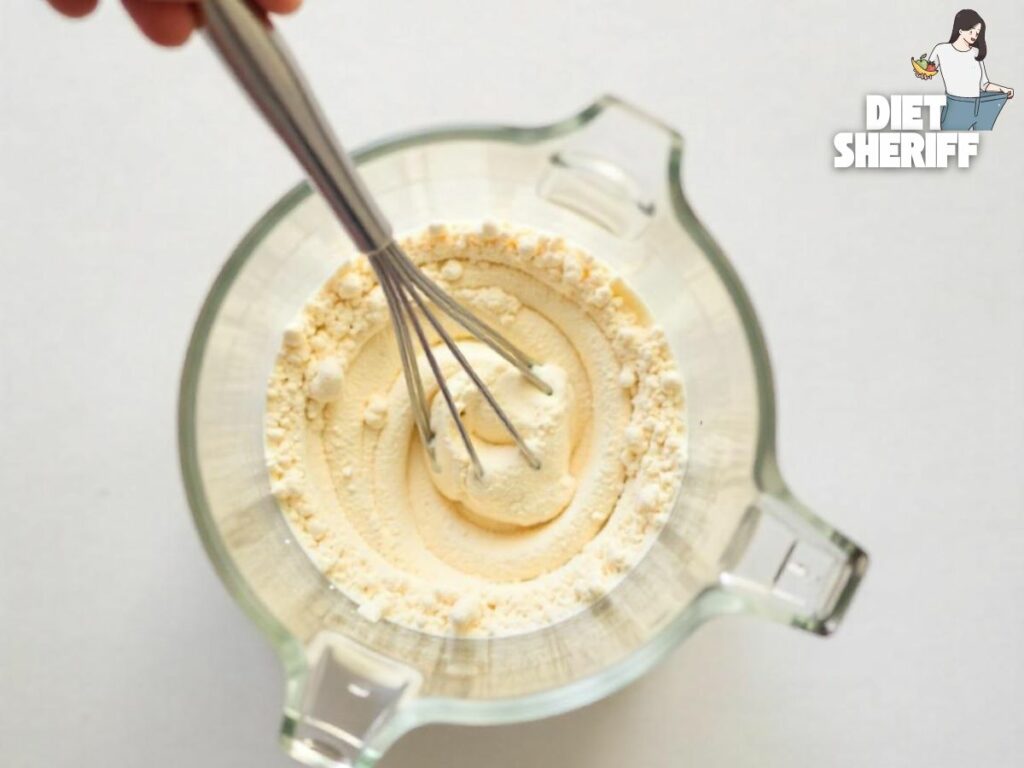
Clumps may result from moisture seeping in via a loosely sealed container or by storing protein powder in a humid area.
- Particle Size
Finer particles in some protein powders might result in more surface area and a higher chance of clumping.
When these tiny particles are combined with liquid, they may adhere to one another.
Larger-particle powders, on the other hand, could not mix as effectively, creating clumps of un-hydrated powder in some places.
- Static Electricity
Protein powder may accumulate static charge during handling and transit, which might lead to particles sticking together.
Clumps may form as a result, particularly if the powder is scooped or spilled.
Static accumulation may be exacerbated by dry conditions or the usage of certain containers.
- Mixing Techniques
Protein powder may clump when added straight to drink without using the right mixing methods.
Adding too much powder or too rapidly might result in lumps that are difficult to dissolve.
Using a spoon rather than a whisk or shaker may result in clumps due to inadequate mixing.
- Temperature Variations
Certain protein powders are more soluble in warm beverages. The powder could not dissolve as readily when combined with cold drinks, which could cause clumping.
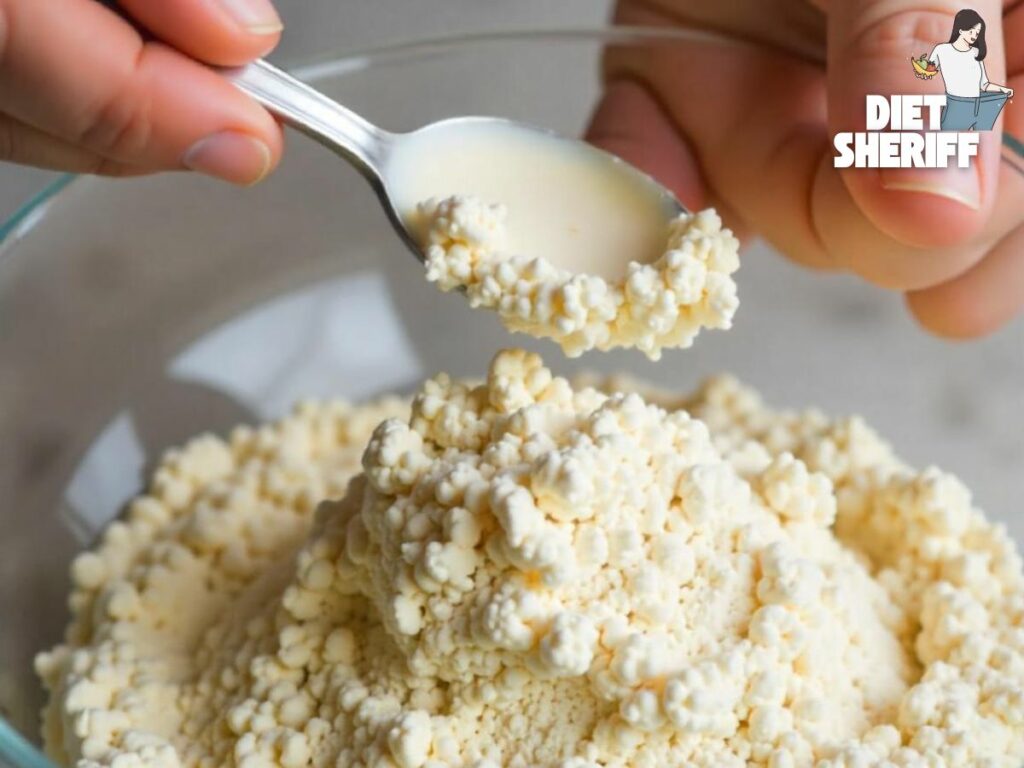
Because of the abrupt temperature fluctuations, clumping may occur when a cold protein powder is added to a warm drink (or vice versa).
- Protein Type
The behavior of various protein sources varies. Whey protein, for example, tends to mix more readily than some plant-based proteins, which could include additional thickeners or stabilizers that cause clumping.
Certain protein powders have extra additives, such as thickeners or fibers, which might change how the powder dissolves in liquids and cause clumping.
- Shelf Life and Expiration
Protein powder may clump as a result of deterioration or texture changes over time. Powder that has expired is more prone to clump and absorb moisture.
The powder may be more prone to moisture if the packing is damaged, which would make clumping even worse.
- Fat Content
A thicker consistency might cause clumping in certain protein powders, particularly those with additional lipids (such MCTs or coconut oil).
When combined with fluids, the lipids have the ability to coat the protein particles, causing them to adhere to one another.
Whole food-based protein powders (such casein or some plant proteins) could have more natural oils, which makes them more likely to clump.
Explore Also:
Creativehouseblog
Gigasecurehome
Mycleanseplan
FAQs Of How to Mix Protein Powder without Clumping
Can I combine water and protein powder?
Yes.
Do casein and whey proteins differ from one another?
Yes, casein protein digests more slowly than whey protein, which is absorbed more quickly.
Can baked products contain protein powder?
Yes.
What qualities should I search for in a premium protein powder?
Choose goods with few ingredients, no added sugars or fillers, and quality testing done by a third party.
Is it possible to combine coffee with protein powder?
Yes.

